University of Wales, Lampeter was founded in 1822 by royal charter, as St David’s College, becoming the oldest degree awarding institution in Wales, and possibly the third oldest in England and Wales after Oxford and Cambridge. In 2010 it merged with Trinity University College to create the University of Wales, Trinity Saint David. During the Great War, many of its students volunteered to serve with the armed forces, several gaining high rank and awards, and sadly many of these were to lose their lives. The photograph of the memorial is courtesy of Mike Berrell.
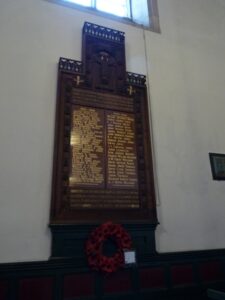
The Great War, 1914-1918
Austin Pugh Cook, Lieutenant, Royal Marine Light Infantry. Austin was the son of Charles Pugh and Mary Ann Cook, of 21, Bridge Street, Haverfordwest. He entered St. David’s College from Haverfordwest Grammar School in October 1912, and graduated B.A. before being commissioned into the Royal Marine Light Infantry in 1915. Austin served with the 2nd Royal Marine Battalion, Royal Naval Division. The Naval Brigades were originally sent to Antwerp and Dunkirk in September and October 1914 to guard against invasion by the Germans. However Antwerp fell to the Germans soon after, and so many of the RND units were withdrawn to England. After a lengthy period of refit and training the Division moved to Egypt preparatory to the Gallipoli campaign. Landing on 25 April 1915 the Division fought throughout the Campaign on Gallipoli. They were transferred from the authority of the Admiralty to the War Office on 29 April 1916, and was redesignated the 63rd (Royal Naval) Division on 19 July 1916. The Division moved to France, arriving at Marseilles between 12 and 23 May 1916 and moved to positions on the Somme, where it took part in the Battle of the Ancre, and the resulting Operations on the Ancre. In April 1917 the Division was at Arras, and fought at the Second Battle of the Scarpe, where they captured Gavrelle. They then fought at the Battle of Arleux. Austin was killed in action near Gavrelle on 26 July 1917. He was 23 years old, and is buried at Naval Trench Cemetery, Gavrelle, France.
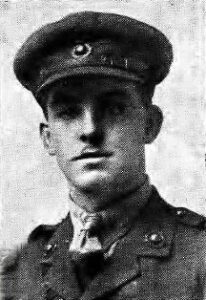
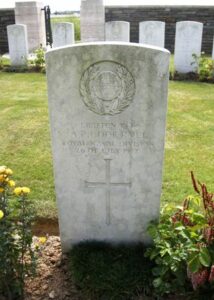
Benjamin Jones Davies, Captain, South Wales Borderers. Benjamin was the son of Griffith and Catherine Margaret Davies, of The Lodge, Llandyssul. Benjamin was educated at Llandovery 1900 from 1905, and after leaving Llandovery, entered St. David’s College, Lampeter, where he became Senior Scholar and graduated B.A. In 1912 Benjamin was a cadet in the Oxford University O.T.C., and in the July of that year was listed as a 2nd Lieutenant, in Reserve of Officers O.T.C. In August 1914, Benjamin joined the University and Public Schools Battalion, Royal Fusiliers, and on 7 August 1914 was commissioned into the 3rd Battalion, South Wales Borderers. On 12 March 1915 Benjamin embarked for France, and on 1 May 1915, was promoted to Captain. In September 1915, Benjamin was posted to the 2nd Battalion, SWB, serving at Gallipoli attached to 87 Brigade, 29th Division. He arrived at Gallipoli on 6 September 1915, and his new Battalion moved to Imbros on 22 September. However, Benjamin’s stay with the Battalion was short lived as he fell ill, and on 28 September 1915 he was in hospital at Alexandria. In February 1916, Benjamin had recovered, and rejoined the Battalion. In March 1916 the Battalion was posted to France, sailing to Marseilles. On its arrival in France, the Battalion went into training at Domart. On 1 July 1916 the Battalion went into action at Beaumont Hamel, on the first day of the Battle of the Somme, and were decimated. Benjamin, along with a Lieutenant Ross, organised the survivors of the attack into two Companies, taking over 300 yards of front line trenches near Mary Redan. The Division then moved for a short period to the Ypres Salient, prior to returning to the Somme Front in October 1916, moving to positions at Grease trench near Gueudecourt, enduring freezing conditions. Here Benjamin was wounded. In April 1917 he rejoined his Battalion at Monchy-Le-Preux, near Arras. On 19 May 1917, Benjamin was killed in action when his Company came under heavy enemy machine gun fire. The Battalion records state that he “led an advance with the utmost courage”. Benjamin was 31 years old, and as he has no known grave, is commemorated on the Arras Memorial, France.
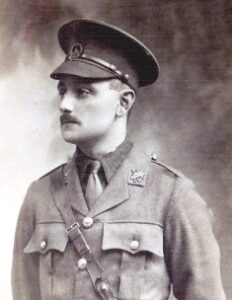
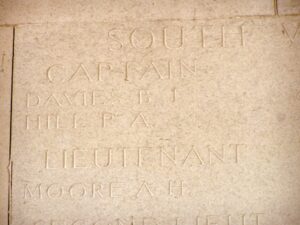
Dan Henry Davies, Private, 5985, (Kings Own) Liverpool Regiment. Dan was born in 1893, the son of Jonathan and Mary Davies, of Gwynfryn, Llanwenog. He entered St. David’s College from Pencader Grammar School in October 1912. Dan enlisted at Blackpool into the army, and was posted to the 5th Battalion, (Kings Own) Liverpool Regiment. The Battalion was attached to 165 Brigade, 55th (West Lancashire) Division, and moved to France during January 1916. They initially served at Arras, before moving to the Somme in July 1916. Dan was killed in action on 5 July 1916, aged just 23. He is buried in Péronne Road Cemetery, Maricourt, France.
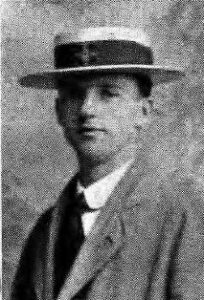
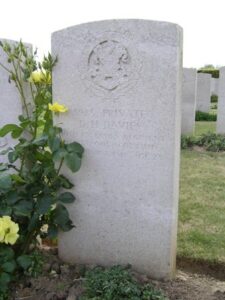
David Ethelstone Davies, Lieutenant, Royal Welsh Fusiliers. David was born on 11 April 1894, the son of Reverend John Davies and Edith Annie Davies, of Llanelltyd Vicarage, Dolgelley, Merionethshire. He was educated at St John’s School, Leatherhead, Llandovery and at Ystradmeurig and was about to begin his education at Lampeter when war broke out. He was commissioned into the Royal Welsh Fusiliers on 3 June 1915 and promoted Lieutenant on 11 April 1916. He trained at Kinmel Park before joining the 10th Battalion, Royal Welsh Fusiliers, which was in France attached to 76 Brigade, 3rd Division. David joined the battalion on the Somme, and would have seen his first major action at Delville Wood. During 1917 the division was at Arras, and it was there that David was killed, while the battalion was defending against a German attack, on 18 June 1917, aged 23. He is buried in Feuchy Chapel British Cemetery, Wancourt, France. David is not commemorated on the Lampeter College Memorial as, although he was intending to attend the college in preparation for service in the ministry, he decided to instead enlist into the army.
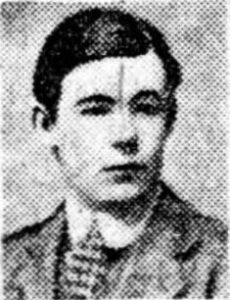
David John Reginald Davies, Sergeant, 1301, Australian Imperial Force. David was the son of David Rees Griffiths and Jane Griffiths of Goitre-Isaf, Derry Ormond. He entered St. David’s College from Lampeter College School in October 1909, and emigrated to Australia in 1911 to continue his education, becoming a school teacher. After the outbreak of war, David enlisted on 28 October 1914 at Liverpool, NSW into the 3rd Battalion, Australian Infantry. After undergoing basic training in Australia, David embarked as part of the 2nd Reinforcements for the 3rd Battalion aboard HMAT Seang Bee on 11 February 1915, and on 7 May 1915 was taken on strength by the battalion at Gallipoli, where it was attached to the 1st Brigade, 1st ANZAC Division, at Anzac Cove. He was in the trenches for a month when he became ill, and was hospitalised at Lemnos for a week, prior to rejoining the battalion, in time for the attack on Line Pine, David was shot in the thigh during the assault on Lone Pine on 8 August 1915. He was evacuated aboard the Hospital Ship SS Dunluce Castle, but died of his wounds at sea on route to Malta on 10 August 1915, aged 27. David was buried at sea, and so is commemorated on the Lone Pine Memorial, Gallipoli. He is named on several memorials as David John Rees Davies, but enlisted under the name David John Reginald Davis.
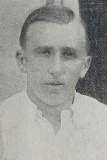

Edwin George Ernest Davies, Able Seaman, Z/1516, Royal Naval Division. Edwin was the son of Mr. and Mrs. James Davies, of The Avenue, Merthyr Tydfil. Edwin commenced his education at Merthyr County School before being educated at Llandovery from 1901 to 1904. On leaving Llandovery, Edwin entered University College Cardiff to study Medicine. However, ill health forced him to abandon his medical studies, and he then entered St. David’s College, Lampeter, where he attained a B.A. degree in History. Later, in 1913, he entered Keble College, Oxford, where he was awarded a B.A. degree in Theology. He later became a curate at Southwark, London. While at Oxford, Edwin boxed at featherweight and was said to be one of the best at his weight at Keble College. He was later instrumental in establishing a flourishing Boxing Club in the East End of London. In 1914, Edwin was ordained curate at Builth Wells, and later that year he enlisted, joining the Royal Naval Division. He was posted to ‘D’ Company, Hawke Battalion, Royal Naval Division, which had been formed from the Public Schools Battalion, R.N.V.R. In the May of 1915, Edwin’s Battalion sailed for Gallipoli, arriving at Cape Helles on 27 May 1915, where they fought as Infantry on the Peninsula throughout the remainder of the year. Because of the evacuation at Anzac, the Turks were able to release the bulk of their artillery to shell the Allied troops at Helles. Edwin was one of between 60 and 70 of his Battalion to be killed and wounded during the ensuing Turkish bombardments on 27 December 1915. He was 29 years old, and as he has no known grave, is commemorated on the Helles Memorial, Gallipoli.
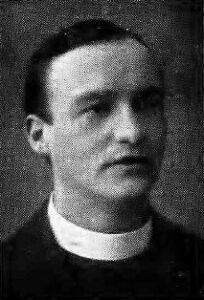
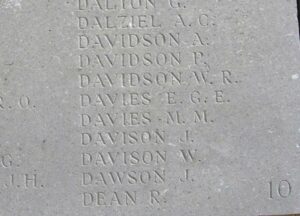
Ernest Wilberforce Davies, Private, 49278, Royal Army Medical Corps. Ernest was the son of Thomas Rhys Davies and Margaret Davies, of Compton House, Vaughan Street, Llanelli. Educated at Llandovery from 1909 to 1912, Ernest entered St. David’s College, Lampeter in October 1912, and was studying at the time when he volunteered for military service, enlisting into the Royal Army Medical Corps at Llanelli in August 1914. Ernest sailed for the Mediterranean on 13 June 1915, and landed at Anzac Cove, Gallipoli, in early August, in preparation for the attack on Sari Bair. His Field Ambulance Unit established a Dressing Station at the crossroads near Aghyl Dere, and in the battle which followed, Ernest Davies died of wounds on 13 August 1915. He was 23 years old, and is commemorated on a Special Memorial at the 7th Field Ambulance Cemetery, Gallipoli.
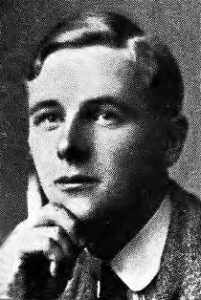
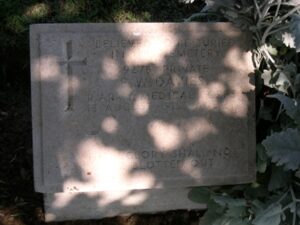
Thomas Arthog Davies, Private, 33348, South Wales Borderers. Thomas was born in 1891, the son of David and Hannah Davies, of Wernnewydd, Cwmpengraig, Henllan. He entered St. David’s College, Lampeter from Ystrad Meurig School in January 1915, and was preparing for the Ministry of the Church of England when he enlisted at Aberystwyth later that year into the 2nd Battalion, South Wales Borderers. In April 1917 Thomas went to France to join the battalion, which was attached to 87 Brigade, 29th Division at Arras. The Division soon moved to the Ypres sector, and took part in the Battle of Langemarck. Thomas was killed here on 16 August 1917. He was 26 years old, and is commemorated on the Tyne Cot Memorial, Belgium.
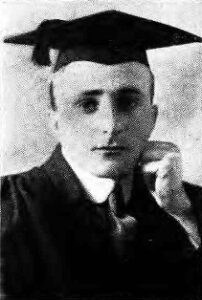
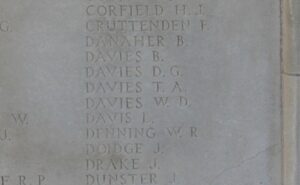
John Charles Edmunds-Davies, Second Lieutenant, Royal Welsh Fusiliers. John was born in 1894, the son of Alderman Walter Davies, J.P., and of Agnes Davies, of London House, Harford Square, Lampeter. He entered St. David’s College, Lampeter from Towyn County School in October 1911. John enlisted into the Public Schools Battalion, London Regiment in August 1914. He was commissioned into the Royal Welsh Fusiliers on 26 July 1915, prior to being sent to France on 11 March 1916, joining the 10th Battalion, Royal Welsh Fusiliers, which was attached to 76 Brigade, 3rd Division. John came home on leave in October 1916, and he married Olive Gwynedd Davies, of Priory Street, Carmarthen, prior to rejoining his battalion on the Somme. Early in 1917 the Division moved to positions near Arras, it was here that John was mortally wounded, whilst at Vimy Ridge on 9 April 1917. John died of his wounds in hospital on 12 April 1917, and is buried at Abbeville Communal Cemetery Extension, France. After the war, his widow, Olive, married Captain James Ira Thomas Jones, the famous Welsh Air Ace from St. Clears.
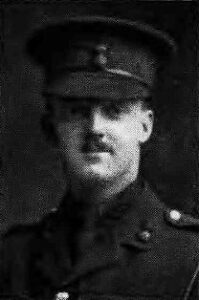
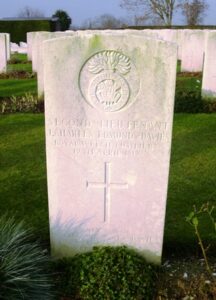
Jacob Evans, Corporal, 28262, South Wales Borderers. Jacob was the son of David Evans, of Cribyn Post Office. He entered St. David’s College from Lampeter College School in October 1913, and graduated B.A. before enlisting at Lampeter into the South Wales Borderers. He was posted to the 5th Battalion, South Wales Borderers, which was attached to 58 Brigade, 19th (Western) Division. The Division moved to France during July 1915, and moved to positions near Loos, where it took part in the opening attack of the Battle of Loos on 25 September 1915. The following year the Division moved to the Somme, where it took part in the second wave of the attack on Ovillers-La Boisselle on 1 July, capturing the village at heavy cost. It then fought through the Somme Battles of Pozières and the Ancre in 1916. In 1917 the Division moved North to Ypres, taking part in the Battle of Messines, then at the Menin Road and at Polygon Wood, before fighting at Broodseinde, Poelcappelle and Passchendaele Village itself. In 1918 they were caught up in the German Spring Offensive near St. Quentin, where they suffered terrible casualties, and fought at the Battle of Bapaume. They moved to Ypres, but were caught up in the German attack at Messines. Jacob was killed here on 11 April 1918. He was 23 years old, and is commemorated on the Tyne Cot Memorial, Belgium.
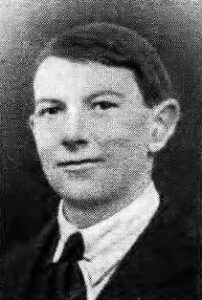
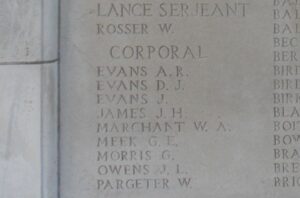
Ronald Alex Llewellyn Gallen, Private, 19599, Royal Welsh Fusiliers. Roland was born in 1894, the son of Edward Alex and Mary Valerie Gallen, of Dylassa, Bettws-Y-Coed, Carnarvonshire. He entered St. David’s College, Lampeter from Ruthin Grammar School in January 1913. Ronald enlisted at the outbreak of war into the 16th Battalion, Royal Welsh Fusiliers, which formed at Llandudno from surplus recruits to the 13th Battalion. On 28 April 1915 the battalion became part of 113 Brigade, 38th (Welsh) Division. The Division had landed in France during December 1915 and had spent their first winter in the trenches near Armentieres, holding the line in various sectors from Cuinchy to Neuve-Chapelle. On 10 April 1916 the battalion was in reserve at Gorre, but had sent a party of machine-gunners to the front to support the Division. Ronald was killed by a sniper here on 10 April 1916. He was 21 years old, and is buried at Guards Cemetery, Windy Corner, Cuinchy, France.
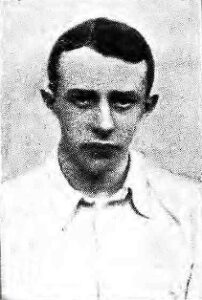
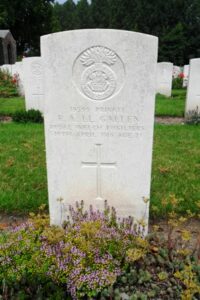
Arthur Fairbrother Green, Second Lieutenant, North Staffordshire Regiment. Arthur was the son of Francis and Harriet Green, of Melbury, Queensland Road, Boscombe, Hants. He entered St. David’s College, Lampeter from Newcastle High School in October 1911 and graduated B.A. before becoming ordained to the Curacy of Sneyd in 1914. Arthur was commissioned into the 2/6th Battalion, North Staffordshire Regiment in 1917. The battalion was attached to 176 Brigade, 59th (2nd North Midland) Division. Arthur probably joined the battalion after it had moved from Ypres to take part in the Cambrai Offensive in November 1917. It was still in the area by March 1918 when the Germans launched their offensive on the Somme on 21 March 1918. Arthur was killed in action that day, when heavily armed German Stormtroopers swarmed over his battalions defences under cover of a heavy mist. He was 29 years old, and is commemorated on the Arras Memorial, France.
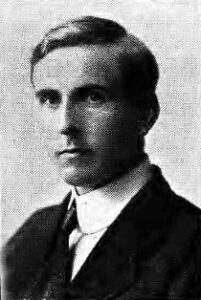
Arthur Lynton Harris, Gunner, 131639, Royal Garrison Artillery. Arthur was the son of David Lake Harris (Inspector of Swansea Schools) and Mary Harris, of 24, The Promenade, Swansea. He was awarded a Phillips Scholarship from Swansea Grammar School in October 1916, but had already enlisted at Swansea on 10 August 1916 into the Royal Garrison Artillery. Arthur was posted to France with the 268th Siege Battery, Royal Garrison Artillery. The battery joined the 2nd Army, and was equipped with 6″ Howitzers. From August 1918 onwards the battery followed the British advance in Flanders. Arthur was killed in action towards the end of the war, on 31 October 1918. He was 20 years old, and is buried at Vichte Military Cemetery, Belgium.
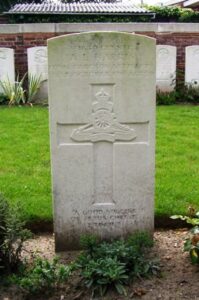
William John Howells, Captain, Welsh Regiment. William was born in White Lion Farm, Eglwys Cummin, in 1888. He resided with his Grandfather, Ben John at Brook, Laugharne prior to being educated at Tremoilet School and Whitland Grammar School, before gaining a BA with Honours at Aberystwyth University. William was English Master at Lampeter College School prior to the war. He enlisted into the Welsh Regiment at the outbreak of hostilities, and was commissioned into the 8th Battalion, Welsh Regiment, which had formed at Cardiff during August 1914 attached to 40 Brigade, 13th Western Division. The Division assembled at Salisbury Plain, and in June 1915 moved to the Mediterranean. On 4 July 1915 the Division landed on Cape Helles and relieved the 29th Division. From there, the Division took part in several actions, most notably The Battle of Sari Bair. The Battalion War Diary for the period from 8 August 1915 shows that they had moved up to positions around Chunuk Bair, in support of the Gloucester’s and the Wellington Battalion. The fighting was ferocious and the diary shows that on that one day, the 8th Welsh suffered 4 Officers and 4 Other ranks killed, 9 Officers and 154 Other Ranks wounded, and 4 Officers and 266 Other Ranks Missing in Action. William was among the wounded. He was evacuated from Gallipoli, but died of his wounds on 10 August 1915 aboard the Hospital Ship HMHS Valdivia. William was buried at sea, so he is commemorated on the Helles Memorial, Turkey.
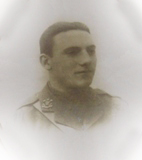
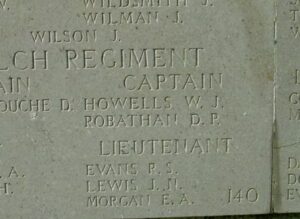
Lewis Reginald Hughes, Second Lieutenant, North Staffordshire Regiment. Lewis was born in 1882, the son of Arthur Johnson Hughes and Mary Elizabeth Hughes, of Aberystwyth. He entered St. David’s College, Lampeter from Bradfield College in October 1901, and graduated B.A. Lewis became a solicitor in his father’s business prior to the war, and on 15 August 1914 was commissioned into the 4th Battalion, North Staffordshire Regiment. On 17 March 1915 Lewis arrived in France, and was attached to the 2nd Battalion, Royal Scots Fusiliers. The battalion was attached to 21 Brigade, 7th Division, and was in action at Neuve Chapelle. During May 1915 they fought at the Battle of Aubers Ridge, and the ensuing Battle of Festubert. Lewis was badly wounded at Festubert, and was evacuated to the nearby hospital at Bethune, where he died on 19 May 1915. Lewis was 32 years old, and is buried at Bethune Town Cemetery, France.
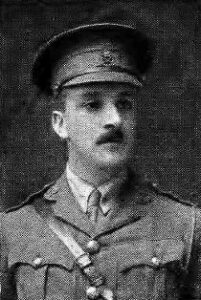
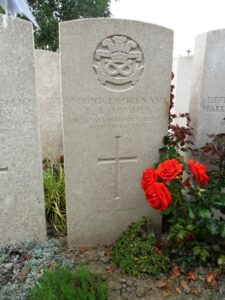
Albert James, Lieutenant, Machine Gun Corps. Albert was the son of James and Harriet James, of 57, Ropewalk Road, Llanelli. He was studying for the Ministry at Lampeter College at the outbreak of war and enlisted into the Public Schools Battalion of the Royal Fusiliers. He was commissioned from there into the 14th Welsh on 12 July 1915. Albert landed in France on 6 September 1917, and was promptly posted to the 10th Battalion, Machine Gun Corps. Albert was wounded by a gunshot in the abdomen during the German Spring Offensive, and died on 28 March 1918. He was 26 years old, and is buried at Gezaincourt Communal Cemetery Extension, France. His widow was then living at the Mostyn Hotel, at Rhyl. Albert is not commemorated on the College Memorial.
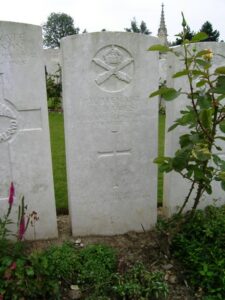
John Stanley Jenkins, Seaman, Z/1208, Royal Naval Reserve. John was born on 15 March 1896, the son of David Jenkins and Mary Jenkins (nee Jones), of 7, Shelden Street, Paddington, London. He entered St. David’s College, from Lampeter College School in October 1914, and lived with his uncle, David Jones, at Beehive, High Street, Lampeter. John left Lampeter and enlisted on 4 January 1915 into Benbow Battalion, Royal Naval Reserve, and was transferred to Anson Battalion on 5 March 1915, sailing for the Mediterranean, where he joined the Base Depot at Mudros. The Royal Naval Division was fighting a Gallipoli, throughout 1915, until being evacuated to Mudros. The Division was transferred from the authority of the Admiralty to the War Office on 29 April 1916, and was re-designated the 63rd (Royal Naval) Division on 19 July 1916, arriving at Marseilles during May 1916, and moved to positions on the Somme. Here, the Division took part in the Battle of the Ancre, making a famous attack on Beaumont Hamel. John was killed in action here on 13 November 1916, aged 20. He has no known grave, and is commemorated on the Thiepval Memorial, France.
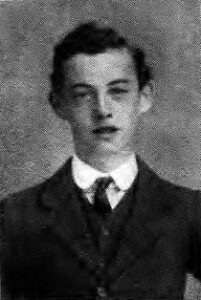
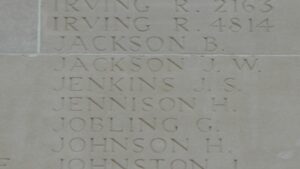
The Reverend Basil Jones, Chaplain 4th Class, Army Chaplain’s Department. Basil was the son of George and Emma Jones, of 15, Mansel Street, Swansea. He entered St. David’s College, Lampeter from Swansea Higher Grade School in October 1908, and graduated B.A. in 1911. Basil was ordained in 1911, and became curate of St. James’s Church, Gloucester. He married Dora Mabel Baugh, of Cardiff in 1915, and she moved into their residence at 48, Conduit Street, Gloucester. Basil took up a commission in the Army Chaplain’s Department in 1918, and was posted to a battery of the Royal Garrison Artillery in France. He took ill towards the end of the war, and died of pneumonia at Le Havre on 25 October 1918, aged 32. Basil is buried in Ste. Marie Cemetery, Le Havre, France.
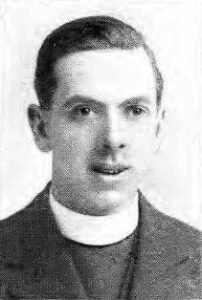
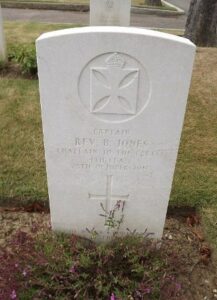
David Robert Jones, Lance Corporal, 320211, Welsh Regiment. David was son of John and Sarah Jones, of Cefnbryn House, High Street, Lampeter. He entered St. David’s College from Lampeter College School in October 1908, and graduated B.A. in 1911. David had served with the Pembroke Yeomanry for several years prior to the war. During March 1916 the 1/1st Pembroke Yeomanry moved to Egypt, where it merged with the Welsh Border Mounted Brigade and formed the 4th Dismounted Brigade. On 2 February 1917 it merged with the 1/1st Glamorgan Yeomanry to form the 24th Battalion, Welsh Regiment, and became attached to 231 Brigade, 74th (Yeomanry) Division. The Division had formed in Egypt in January 1917 and had fought through the Palestinian Campaign, at the Battles of Gaza and the Battle and capture of Jerusalem. David was killed in action here during the Third Battle of Gaza, on 6 November 1917. He was 28 years old, and is buried at Beersheba War Cemetery, Israel.
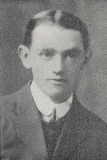
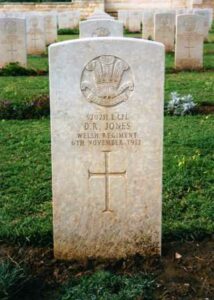
James Mayberry Jones, Private, 26556, South Wales Borderers. James was the son of David Enoch Jones and Mary Anne Jones, 30, College Street, Lampeter. He enlisted at Lampeter into the South Wales Borderers, and was posted to France early in 1916, joining the 2nd Battalion, South Wales Borderers, which had recently arrived from Gallipoli, attached to 87 Brigade, 29th Division. James joined the battalion on the Somme, where it held positions near Beaumont Hamel, opposite Y-Ravine, a strongly defended German position. On 1 July 1916 the Division attacked Y-Ravine, and was decimated by concentrated machine-gun fire, the 2nd SWB alone losing over 400 men in little under an hour. James was killed whilst on patrol at around 02.00 on the morning of 22 July 1917, when the Germans launched a brief but fierce artillery bombardment on the battalion. He was 22 years old, and is commemorated on the Thiepval Memorial, France.
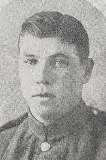
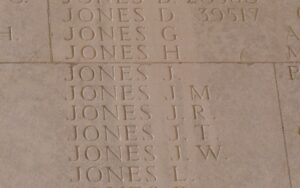
John Idwal Jones, Private, PS/10109, Royal Fusiliers. Idwal was born in 1894, in Well House, Swyddffynnon, Cardiganshire, the son of Joseph and Martha Jones. He entered St. David’s College, Lampeter from Ystrad Meurig Grammar School in October 1915, and within months enlisted at Lampeter into the 9th Battalion, Royal Fusiliers, which was attached to 36 Brigade, 12th (Eastern) Division. By June 1916 the division was in position at the Somme, and attacked Ovillers on 2 July. They fought at Pozières and Le Transloy before being moved to the Arras area during October 1916, where they fought in the March 1917 Battle of Arras, taking part in the First Battle of the Scarpe, and the Battle of Arleux. They then fought at the Third Battle of the Scarpe, and helped capture Roeux. The Division remained at Arras until taking part in the Battle of Cambrai in November 1917. After initial successes, the Germans counter-attacked on 30 November, and the 9th Royal Fusiliers were caught up in terrible fighting in trenches south of the Gouzeaucourt-Cambrai road. During the mornings fighting the 9th had lost 13 officers and 208 other ranks killed. Idwal was amongst those men killed at Cambrai on 30 November 1917. He was 23 years old, and is commemorated on the Cambrai Memorial, Louverval, France.
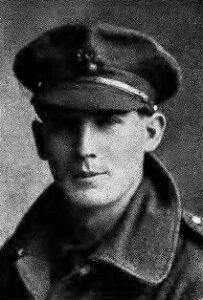
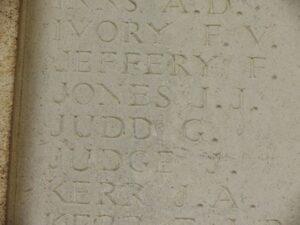
The Reverend Thomas Glasfryn Jones, Chaplain 4th Class, Army Chaplains’ Department. Thomas was born on 28 January 1884, the son of John and Mary Jones, of 3, Meidrym Road, Llangeitho. After attending Tregaron School, and studying for his B.A. at Lampeter, he graduated from St. Michael’s Theological College, Aberdare in 1906 and became Curate at Mostyn. He was offered the Curacy of Bylchau, near Denbigh but instead volunteered to serve with the Army Chaplains’ Department, and was commissioned on 3 July 1916 before landing in France on 5 July 1916, to join the 11th Battalion, South Wales Borderers, which was attached to the 38th (Welsh) Division. He was wounded near Bluet Farm on 24 March 1917 whilst attending to a wounded soldier and suffered gunshot wounds to his spine and lungs. Thomas was treated at the 46th Casualty Clearing Station at Mendinghem before being evacuated to the 7th Stationary Hospital at Boulogne. He was then brought back to England via Hospital Ship and was taken to the Empire Hospital, Vincent Square, London for treatment. Thomas died there of his wounds on 12 April 1917, aged 33. His remains were conveyed home and he was buried in St. Ceitho’s Churchyard, Llangeitho four days later. Two of his cousins were also killed: Thomas Arllwyd Jones and Stephens Jones Williams.
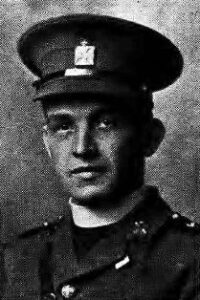
Thomas Lloyd Jones, Private, 16523, Royal Welsh Fusiliers. Thomas was in 1894 the son of Alderman William Jones and Jane Jones, of Bryndewi, Bryn Road, Lampeter. He entered St. David’s College from Lampeter College School in October 1912. Thomas enlisted at Aberystwyth in August 1914 into the 13th Battalion, Royal Welsh Fusiliers, which was formed in August 1914 at Colwyn Bay. On 28 April 1915 the battalion became part of 113 Brigade, 38th (Welsh) Division. The Division had landed in France during December 1915 and had spent their first winter in the trenches near Armentieres. In June they marched south to the Somme, where they were tasked with the capture of Mametz Wood. The attack on the wood began on 7 July, but met with fierce resistance, and it took until 14 July to totally clear the wood. Thomas was wounded during the heavy fighting in the wood on 10 July, and was evacuated to Daours, where he died on 11 July 1916. Thomas was 22 years old, and is buried at Daours Communal Cemetery Extension, France.
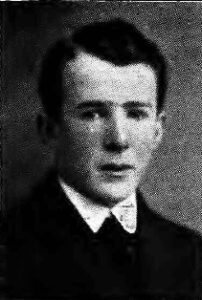
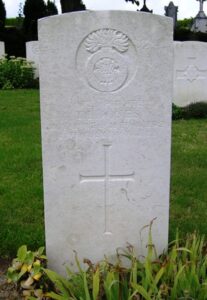
Thomas Lloyd Rees Jones, Lieutenant, South Wales Borderers. Thomas was born in Pencader, the son of Thomas Rees Jones and Mary Jones, and was the Husband of Charlotte Mary Prichard Evans (formerly Jones), of Chelton Dale, Whitchurch, Ross-on-Wye. He was commissioned into the army from St. David’s College, into the 4th Battalion, South Wales Borderers. Thomas saw service with the battalion in Mesopotamia, but became ill, and returned home. He was then posted to Ireland, where the rebellion was gaining pace. In February 1918 he married Charlotte Mary Davies, of 7, Guildhall Square, Carmarthen, and after the armistice, went to Germany with the Army of Occupation. Thomas suffered a re-occurrence of malaria while in Germany, and returned home, but complications set in, and Thomas died on 29 September 1919. He was 26 years old and is buried in Llanfihangel-Ar-Arth (St. Michael) Churchyard.
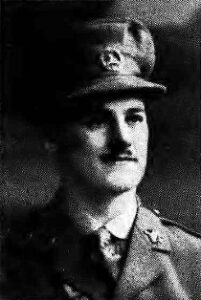
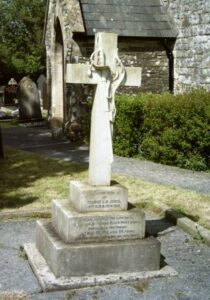
The Reverend William Edgar Jones, Chaplain 4th Class, Army Chaplains’ Department. William was the Son of Jonathan B. Jones and Anne Jones, of Garth, Aberaeron. He entered St. David’s College, Lampeter from Ystrad Meurig Grammar School in October 1908, and graduated B.A. in 1911. He was ordained in 1912 and became Curate of Loughor, before taking up Curacy of St. Jude’s then St. Timothy’s, Sheffield. William was commissioned into the Army Chaplain’s Department in 1916, and served in Salonika from 15 July 1917. Early in 1918, William was posted to the 9th Battalion, Yorkshire Regiment, which was attached to 74 Brigade, 25th Division. The Division had been in France since September 1915, and had fought at Loos. In 1916 it took part in the Somme Offensive, and in 1917 saw action at Third Ypres. The Division took part in heavy fighting during the German Spring Offensives of March and April 1918. After suffering heavy casualties, it was moved to the Aisne, where it saw further heavy fighting during the German offensive of 27 May. The core of the Division returned to England to rebuild, and returned to the front in September 1918, moving at first to St Riquier near Abbeville. Late in the month, it entrained for Fourth Army, coming under XIII Corps, and took part in the advance across Picardy, fighting at the Battle of Beaurevoir. They then fought during the remainder of the great offensive, at the Battle of Cambrai, the Pursuit to the Selle, the Battle of the Selle, and the Battle of the Sambre. William was wounded during the Battle of the Selle, and was evacuated to a Casualty Clearing Station at Roisel, where he died of his wounds on 24 October 1918. He was 30 years old, and is buried at Roisel Communal Cemetery Extension, France. His brother, Joseph Sydney Jones, also fell.
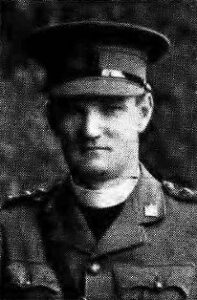
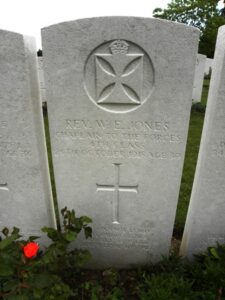
Albert King, Second Lieutenant, Monmouthshire Regiment. Albert was born on 23 December 1893, the son of Rees and Elizabeth King, of 13, Church Street, Rhymney, Cardiff. He entered St. David’s College from Lampeter College School in October 1913. At the outbreak of war Albert enlisted into the 16th Battalion, Royal Welsh Fusiliers, landing in France with the 38th (Welsh) Division on 2 December 1915. Albert was commissioned into the Monmouthshire Regiment on 1 August 1916, and was posted to the 2nd Battalion, which was the Pioneer Battalion to the 29th Division. The division remained in the Somme sector over the winter, before moving to the Arras front in the spring of 1917, where it saw heavy fighting around Monchy-le-Preux, during the Battle of Arras. Albert was killed by a shell while on patrol near Monchy on 31 May 1917, aged 24. He has no known grave, and is commemorated on the Arras Memorial, France.
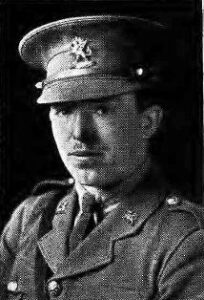
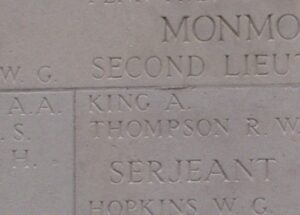
Leonard Glynne Lewis, MC, Second Lieutenant, Welsh Regiment. Leonard was born in 1894, the son of Daniel Oliver and Edith Lewis, of Central Homes, Pontypridd. He entered St. David’s College, Lampeter from Christ’s College, Brecon in October 1912. In August 1914 Leonard enlisted into the Public Schools Battalion, Royal Fusiliers, and was commissioned in May 1917 into the 18th Battalion, Welsh Regiment, which was attached to 119 Brigade, 40th (Bantam) Division. Leonard joined the battalion when it was near Cambrai, readying for the forthcoming Battle of Cambrai. Leonard gained the award of the Military Cross for his gallantry during the early stages of the battle, but was killed at Bourlon Wood on 24 November 1917. he was 23 years old, and is commemorated on the Cambrai Memorial, Louverval, France. The citation for his MC was published in the London Gazette of 19 November 1917, which read; ‘For conspicuous gallantry and devotion to duty. He guided a raiding party to the assembly position, and thence to a gap in the enemy’s wire, a distance of 800 yards. With his sergeant he was the first of his party to enter the enemy trenches. Although stunned by a bomb on entering, he led his party forward with courage and determination, and with a small group of men continued the clearing of the trench until the time for the withdrawal.
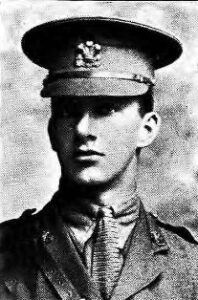
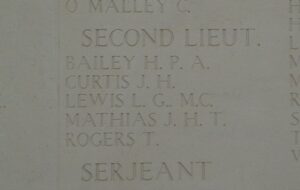
Gilbert Lewis Lloyd, Second Lieutenant, London Regiment. Gilbert was born at Llansteffan in 1888, the son of Reverend William Reece Lloyd and Emily Elizabeth Lloyd. His father had been the vicar of Llansteffan and Llanddarog prior to his death. Gilbert entered St. David’s College from Lampeter College School in October 1913. He joined the Army Service Corps in 1914, and fought in the ranks on the Somme in 1916 before being commissioned into the London Regiment in May 1917 and posted to the 1/21st Battalion, London Regiment (First Surrey Rifles). The battalion was attached to 142 Brigade, 47th (2nd London) Division. Early in 1917 the Division moved north to Belgium, and took part in the Battle of Messines, and then in November 1917 fought at the Battle of Cambrai. Gilbert was killed at Cambrai on 30 November 1917, aged 29. He has no known grave and is commemorated on the Cambrai Memorial, Louverval, France.
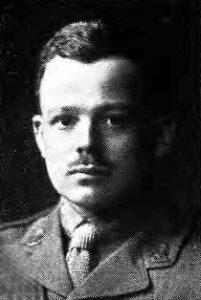
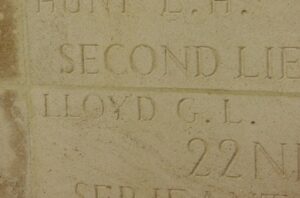
Cecil Evelyn Long-Price, Captain, West Yorkshire Regiment. Cecil was born on 23 February 1878, the son of David Long Price and Suzanne Price, Talley House, Talley. He entered St. David’s College, Lampeter in October 1895, graduating B.A. in 1898. He was commissioned into the Munster Fusiliers, before being posted to the Indian Army in 1900. He married Mary Langford Sainsbury at Taunton on 1 January 1913. At the outbreak of the Great War, Cecil was transferred from the West African Regiment to the 9th Battalion, West Yorkshire Regiment, which was attached to 32 Brigade, 11th (Northern) Division. The Division were sent to Gallipoli, and landed at Suvla Bay on 7 August 1915. Cecil was 38 years old when he was killed in action that same day. He is commemorated on the Helles Memorial, Gallipoli.
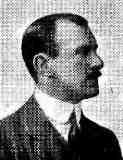
Wallis Austin Jonathan Marsden, Lieutenant, Royal Field Artillery. Wallis was born in 1889, the eldest son of the Reverend Jonathan Marsden, and Emmiline Marsden, of Llanllwch. He entered St. David’s College, Lampeter from Carmarthen Grammar School in October 1907, graduating B.A. in 1910. Wallis was commissioned into the Territorials prior to the war, and was posted to France with the 2nd London Brigade, Royal Field Artillery, landing in France on 12 November 1915. Wallis was wounded during the Battle of the Somme, on 21 September 1916 and was brought back to England for treatment at the Empire Hospital, Westminster. He died of his wounds on 20 July 1917, aged 28, and was brought home for burial at Llanllwch (St. Luke) Churchyard.
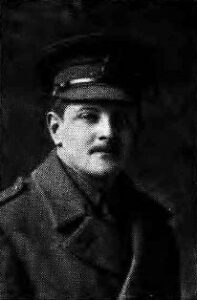
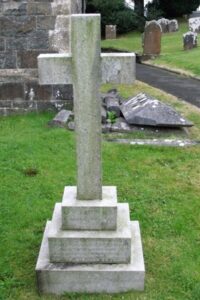
Charles Herbert Morris, Lieutenant, Royal Flying Corps. Charles was the son of William and Jane Charlotte Morris, of Severn Villa, Welshpool, Mont. He entered St. David’s College from Lampeter College School in October 1912. In August 1914 he enlisted into the 13th Battalion, Royal Welsh Fusiliers, and landed in France in December that year to join one of the regular battalions. Charles then joined the Royal Flying Corps, and was posted to 59 Squadron, RFC, which had formed at Narborough on 1 August 1916, before moving to France, equipped with the Royal Aircraft factory RE8. During the spring of 1917 the allies launched their Arras offensive, and 59 Squadron became involved in photo reconnaissance and spotting work for the Royal Artillery. On 13 April 1917 Charles was flying as an observer aboard RE8, Serial A3216, which had been detailed to photograph targets around Etaing. The aircraft was one of six from the squadron which was shot down by German fighters, at the height of what would become known in the RFC as ‘Bloody April’. Charles and his pilot, Captain G.B. Hodgson were posted as missing that day. Charles was 25 years old, and is commemorated on the Arras Flying Services Memorial, France.
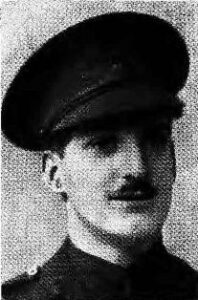
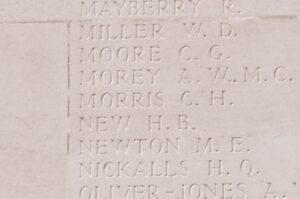
David Christopher Parry-Davies, Captain, South Wales Borderers. David was born in 1899, the son of David Rhys and Elizabeth Parry-Davies, of The Rectory, Puncheston, Pembrokeshire. He was commissioned into the South Wales Borderers on 31 October 1914, and promoted to Temporary Captain on 23 December 1915. He was posted to France on 24 September 1916, at first joining the 6th Battalion, South Wales Borderers. When the 2nd Battalion, South Wales Borderers moved to France from Egypt on 15 March 1916, David was transferred to them. They had been at Gallipoli in 1915 attached to 87 Brigade, 29th Division, and upon transferring to France took up positions at Beaumont Hamel. In April 1916, the 2nd SWB were the subjects of a raid by the Germans which caused heavy casualties, and resulted in a large number of men being taken prisoner. As a retaliatory gesture, on 29 April a Company of the battalion moved into No Man’s Land behind an artillery bombardment, to exact their revenge. Unfortunately the men were caught in their own bombardment, and suffered heavy casualties. David was badly wounded here, and died at No. 4 Casualty Clearing Station on 10 May 1916. He is buried at Beauval Communal Cemetery, France. David is not commemorated on the College Memorial but an obituary stated that he had been educated there, and had been Junior Classical Master at the College School.
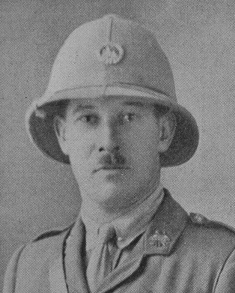
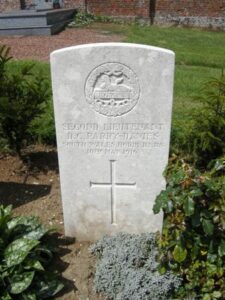
Frederick Seaton Smith, Chaplain 4th Class, Army Chaplains’ Department. Frederick was the son of Frank and Mary Jane Smith, of Regent Street, Pocklington, Yorks. He entered St. David’s College, Lampeter from St. Peter’s School, York in January 1910, and graduated B.A. in 1913. Frederick had married Martha Lilian Boyden in 1911, before being ordained to the Curacy of St. John’s, Bradford in 1913, and then appointed Curate of All Saints, Leeds in 1916. He then volunteered to serve in France with the Royal Army Chaplains’ Department in 1918, and was attached to the 13th Battalion, York and Lancaster Regiment (1st Barnsley Pals). The Battalion was attached to 94 Brigade, 31st Division, and in 1918 saw heavy fighting during the German offensive of 21 March 1918. After suffering terrible casualties the Division was moved to Flanders to rest, but was caught up in a fresh German offensive in Flanders, playing a part in the Defence of Nieppe Forest. In August 1918 the war turned in favour of the Allies, and the Division took part in the Advance in Flanders. They then fought at the Battle of Ypres, and the subsequent Action of Tieghem. Frederick was wounded during the final days of the war, and was evacuated to hospital at Wimille, where he died of his wounds on 15 November 1918. He was 31 years old, and is buried at Terlincthun British Cemetery, Wimille, France.
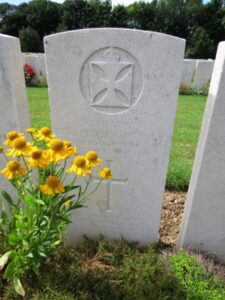
George De Ville Smith, Captain, York and Lancaster Regiment. George was the son of Charles Smith, of Derby. He entered St. David’s College, Lampeter from St. Andrew’s Grammar School, Derby in October 1907, and after graduating was ordained at St. Anne’s Church Birkenhead, Barnsley where he became curate of Worsbrough Dale. George volunteered to serve in the army at the outbreak of war, and was commissioned on 28 September 1914 into the 13th Battalion, York and Lancaster Regiment (1st Barnsley Pals). The Battalion was attached to 94 Brigade, 31st Division, and in December 1915 moved to Egypt, prior to moving to France in March 1916, where they saw their first major action at the Battle of Albert in July 1916. The Division took part in the assault on Serre, and suffered very high casualties on 1 July 1916. Amongst the dead was George, who was killed by a shell burst during the charge. He was 31 years old, and is buried at Euston Road Cemetery, Colincamps, France.
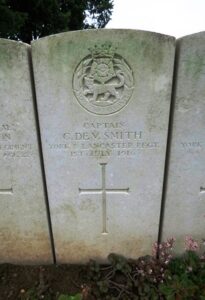
Thomas Oliver Thomas, Second Lieutenant, Royal Welsh Fusiliers. Thomas was born at Lampeter in 1895, the son of the Reverend D. P. and Mrs. Thomas. The family later resided at The Rectory, Llanberis, Merioneth. He had been educated at St. David’s College, Lampeter, before becoming a schoolmaster in London, and enlisted there at the outbreak of war into the Public Schools Battalion, Royal Fusiliers. Thomas was commissioned into the Royal Welsh Fusiliers in 1915, and was posted to France in December 1915 with the 17th Battalion, Royal Welsh Fusiliers, which was attached to 115 Brigade, 38th (Welsh) Division. The Division moved to the Fleurbaix sector, where it was initiated into trench warfare. During June 1916 the Division marched south to the Somme, and on 7 July 1916 attacked Mametz Wood. The initial attack failed, and it was three days later, on 10 July, that a fresh attack was mounted. Thomas was killed in action during the terrible fighting in the wood on 11 July 1916. He was 22 years old, and is commemorated on the Thiepval Memorial, France. Thomas is not commemorated on the Lampeter Memorial, nor on the St David’s College Memorial.
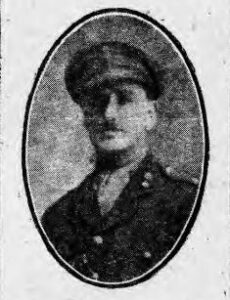
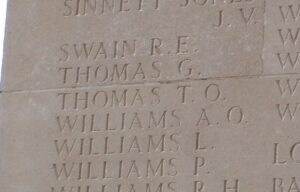
Edward Hilliard Day Whitfield, Second Lieutenant, York and Lancaster Regiment. Edward was the son of Edward H. Whitfield, of Chester. He had been educated at King’s School, Chester, before gaining his B.A. at St. John’s College, Cambridge, and took up the post of Mathematics Lecturer at St. David’s College, Lampeter. Edward was commissioned into the 6th Battalion, York and Lancaster Regiment in August 1914. The battalion was attached to 32 Brigade, 11th (Northern) Division and on 3 July 1915 sailed from Liverpool for Gallipoli, landing at Suvla Bay on 6 August. Edward was killed at Gallipoli the following day, on 7 August 1915, aged 22. He has no known grave, and is commemorated on the Helles Memorial, Gallipoli. Oddly, Edward is shown on the new memorial as Edward H D Williams, although the original memorial was correct.
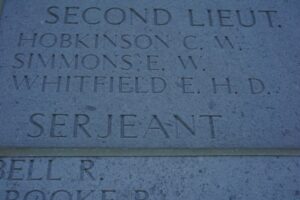
John Basil Percy Williams, Private, 19981, Royal Welsh Fusiliers. John was born at Param, West Indies, the son of Reverend William Rhys Williams and Sara Jane Williams. The family returned to Wales when John was young, and he was educated at Ystrad Meurig Grammar School before entering St. David’s College, Lampeter on 16 October 1908. He enlisted at Llandudno late in 1914 into the 16th Battalion, Royal Welsh Fusiliers, which was attached to the Welsh Division (later 113 Brigade, 38th (Welsh) Division). The Division had landed in France during December 1915 and had spent their first winter in the trenches near Armentieres. In June they marched south to the Somme, where they were tasked with the capture of Mametz Wood. The attack on the wood began on 7 July, but met with fierce resistance, and it took until 14 July to totally clear the wood. The Division suffered terrible casualties at Mametz, and were taken out of the line, and moved to Ypres to rebuild. John was among a batch of men attached to the 254th Tunnelling Company, Royal Engineers at Ypres, and was killed there on 25 June 1917. He was 28 years old, and is buried in Poperinghe New Military Cemetery, Belgium.
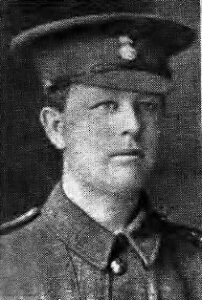
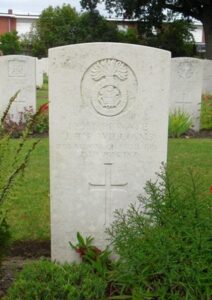
Edmund Oswald Griffith Williams-Meyrick, Lieutenant, Royal Welsh Fusiliers. Edmund was born in 1878, the son of Reverend John and Clara Meyrick, of Beaumaris, Anglesey. He entered St. David’s College, Lampeter from Friars School, Bangor in January 1899, and became a member of the Inner Temple. After becoming ordained as a Clerk in Holy Orders, he married Gwendoline Kate Dew, of Rhyl, in 1902, and the couple resided prior to the war at Withy Cott, Abbotsbrook, Bourne. Edmund was commissioned into the Royal Welsh Fusiliers. He was posted to Gibraltar, with the 1st Garrison Battalion, Royal Welsh Fusiliers. He became ill, and died in Gibraltar on 7 May 1916, aged 39. Edmund is buried at Gibraltar (North Front) Cemetery.
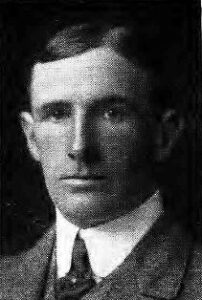
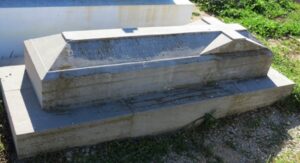
The Reverend Herbert William Wood, Chaplain 4th Class, Army Chaplains Department. Herbert was born in Malvern in 1874, the son of Reverend Thomas William Wood, and Harriet Wood. The family later moved to St. John’s Rectory, Clerkenwell, London. Herbert entered St. David’s College, Lampeter from St. John’s, Leatherhead, and graduated B.A. in 1894. He became Curate of Thornton Watlass in 1898, and Vicar of Norton with Lenchwick, Evesham by 1907. He married Annie Violet Bushby, of Oswestry, in 1905. Herbert volunteered to serve with the Army Chaplains Department, and was commissioned on 5 January 1916. He was attached to a battery of the Royal Garrison Artillery, and was reported to the school to have died from wounds at sometime in the war. For this reason, Herbert is named on the original college war memorial, but he actually survived the war, and died at Upton upon Severn in 1943, aged 69. Herbert is not on the new college memorial.
World War Two, 1939-1945
William Gwynfryn Brooks, B.A., Flying Officer, 176857, Royal Air Force. William was the son of William and Ann Brooks. He was commissioned as a Flying Officer into the Royal Air Force in July 1944, joining 541 Squadron, Royal Air Force as a Pilot. The Squadron was a photographic reconnaissance unit, equipped with the Supermarine Spitfire, which was unarmed, to allow greater speeds to be reached, the only defence a photographic aircraft had. William was unfortunately shot down on a reconnaissance mission over Germany on 3 March 1945. He was 27 years old, and is buried at Berlin 1939-1945 War Cemetery, Germany.
Francis George Child, Ordinary Seaman, Merchant Navy. Francis was the son of William John Child, and of Elizabeth Jane Child, of Penygroes, Carmarthenshire. He served with the Merchant Navy aboard the MV British Vigilance, a London registered tanker. On 3 January 1943, British Vigilance was on route from Curacao via Trinidad to Gibraltar in Convoy TM-1, carrying a cargo of 11,000 tons of petroleum, when she was torpedoed by the German submarine U-514, about 900 miles from Barbados. The tanker was abandoned, and was sunk by another U-Boat two weeks later, but 27 men had been lost in the original attack. Francis was amongst the dead. He was 24 years old, and is commemorated on the Tower Hill Memorial, London.
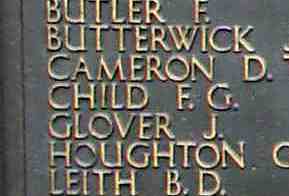
Edward John Raleigh Davies, B.A., Captain, 65446, Royal Artillery. Edward was the son of Captain E. J. Davies and Catherine Raleigh Davies, of Port Talbot, Glamorgan. He was commissioned into the Royal Artillery, and was posted to the Far East with 130 Field Regiment, Royal Artillery. The Company took part in the Arakan campaign in Burma, attached to the 26th Indian Division. Edward was killed in Burma on 3 May 1943. He was 28 years old, and is commemorated on the Rangoon Memorial, Myanmar.
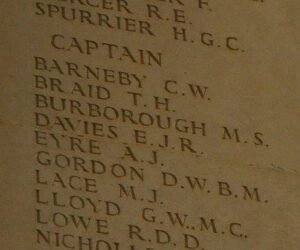
The Reverend John Oswald Dean, B.A., Chaplain 4th Class, Royal Army Chaplains’ Department. John was the son of William Henry and Amelia Dean, and the husband of Ena Dorothea Jane Dean, of Tewkesbury, Gloucestershire. He served as a Chaplain with the Royal Army Chaplains’ Department, and was based at the Singapore Garrison. John was taken prisoner at the fall of Singapore in December 1941, and was one of thousands of men forced into captivity at Changi Jail. He died there on 16 April 1942, aged 35, and is buried at Kranji War Cemetery, Singapore.
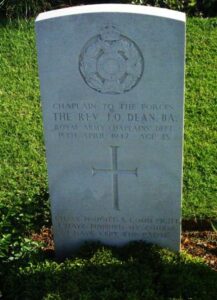
James Stanley Evans, B.A., Aircraftman 1st Class, 1262829, Royal Air Force Volunteer Reserve. James was the son of Richard and Mabel Evans, of Port Talbot, Glamorgan. He served with 243 Squadron, Royal Air Force. The Squadron was based at Kallang Airport in Singapore, and fought during the Battle of Singapore in 1941-42 with the Brewster Buffalo fighter. James was taken prisoner during the surrender of the garrison in December 1941, and was taken into captivity at Changi Jail. James was probably one of many men used as forced labour by the Japanese, and died in captivity on 15 February 1942. He is commemorated on the Singapore Memorial, Singapore.
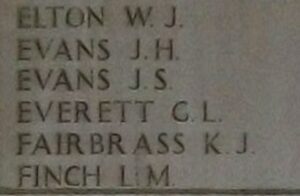
John Vernon Evans, B.A., Flight Lieutenant, 124672, Royal Air Force Volunteer Reserve. John was born on 10 June 1918, the son of David John Evans and Hannah Jane Evans (nee Davies), of Gwaun-cae-Gurwen. He had studied for Holy Orders, gaining his B.A. at Lampeter University prior to the war. John enlisted into the Royal Air Force Volunteer Reserve and trained as a Navigator before being posted to 109 Squadron, Royal Air Force. The squadron had reformed on 10 December 1940 from the Wireless Intelligence Development Unit at RAF Boscombe Down operating a variety of aircraft, tasked with identifying German radio beams and in developing methods to jam them, as well as developing wireless and radar navigation aids for RAF Bomber Command. In 1942 the squadron moved to RAF Stradishall with the de Havilland Mosquito light bomber fitted with Oboe and then moved to RAF Wyton where it formed part of the Pathfinder Force. On 2 April 1944 the squadron moved to RAF Little Staughton, in Bedfordshire. On 4 March 1945 John took off from Little Staughton aboard a Mosquito BXVI, Serial PF447, piloted by Alfred Payne, as part of a Pathfinder Force sent to mark targets at Hallendorf. The mission had been successfully carried out and the Mosquito headed for home. Unfortunately the aircraft crashed whilst landing at Melsbroek Airfield near Brussels on the morning of 5 March 1945. John was 26 years old, and is buried next to Alfred in Brussels Town Cemetery, Belgium.
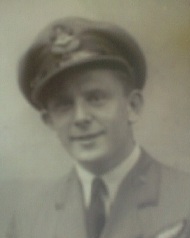
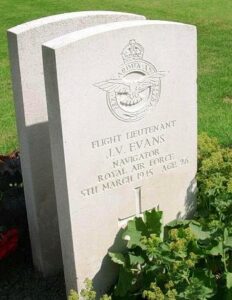
John Roderick Harries, B.A., Flight Lieutenant, 84889, Royal Air Force Volunteer Reserve. John was the son of Roderick Harries, and of Ray Mary Harries, of Cribyn. He was a Clerk in Holy Orders prior to the war, and volunteered to serve in the Royal Air Force. John became a Wireless Operator/ Air Gunner with 77 Squadron, Royal Air Force. He was killed when his aircraft was shot down over Germany on 21 April 1943. John was 33 years old, and is buried at Berlin 1939-1945 War Cemetery, Germany.
Edward Jenkins Jones, B.A., Major, 129966, South Wales Borderers. Edward was the son of William David and Esther Elizabeth Jones and the husband of Kathleen A. Jones, of St. Marylebone, London. He had been commissioned into the South Wales Borderers, and embarked for the Far East with the 6th Battalion, South Wales Borderers in October 1942, which trained in India as a tank regiment until March 1943, before being reconverted to infantry, and taking part in the Burma campaign. Edward took part in the famous capture of the Mayu Tunnels by the battalion, which then took part a nine month march into Burma. He was killed during heavy fighting at Sahmaw Chaung on 5 August 1944, aged 31, and is buried at Taukkyan War Cemetery, Burma. The photograph was kindly supplied by Tony Beck.
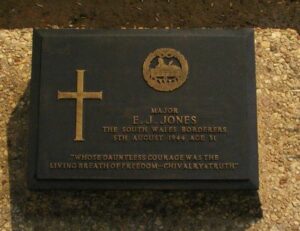
Gwyn Jones. This man cannot presently be identified.
John Leigh Caradog Jones, B.A., Warrant Officer, 1184707, Royal Air Force Volunteer Reserve. John was the son of The Revd. Ivor Caradog Jones, B.A., and Sarah Leigh Jones, of Lyddington Vicarage, Uppingham, Rutland. He served as a Pilot with the Royal Air Force, and was based in India during the war. John died in India whilst on active service, on 2 May 1945. He was 29 years old, and is buried at Calcutta (Bhowanipore) Cemetery, Kolkata, India.
Ralph Claude Hilton Jones, Ordinary Seaman, D/JX 556820, Royal Navy. Ralph was the son of Radcliffe Claude and Ethel Miriam Jones, of Llandrindod Wells, Radnorshire. He served with the Royal Navy aboard HMS Mourne, a River Class Frigate. On 15 June 1944, Mourne was attached to the 5th Escort Group, on patrol in the English Channel, when she was torpedoed and sunk by the German submarine U-767. Ralph died in the sinking that day. He was 19 years old, and is commemorated on the Plymouth Naval Memorial, Devon.
John Llewelyn, Sergeant (Pilot), 1381320, Royal Air Force Volunteer Reserve. John was born on 16 April 1918, the son of John Morgan Llewelyn and Elizabeth Llewelyn, of Cwmberach Farm, Glanamman. He enlisted into the Royal Air Force Volunteer Reserve at the outbreak of war, and was selected for pilot training. After receiving his initial training in the USA, John returned to Britain, and joined 88 Bomber Squadron, RAF. After completing a full operational tour, he was posted to 19 OTU at RAF Kinloss. On 21 August 1942, John was piloting an Avro Anson, Serial DJ106, which took off on a navigational training flight. Visibility was probably poor, and the aircraft crashed into the top of Ben Macdui in the Cairngorms, killing John and his four crewmen. Their bodies were recovered two days afterwards, three of the men being buried at Kinloss, one at Windermere, and John at Garnant (Old Bethel) Welsh Congregational Chapelyard. Many thanks to John’s nephew, Geraint Llewelyn, for the photograph of John, taken before leaving the family home in 1941.
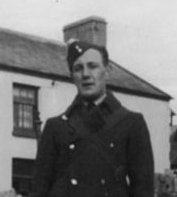
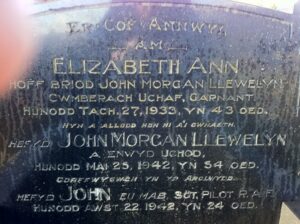
Reverend Ivor Joseph Morris, B.A., Chaplain 4th Class, 157811, Royal Army Chaplains’ Department. Ivor was the son of Joseph Peregrine Morris and Mary Morris. He was commissioned in January 1941 as a Chaplain 4th Class with the Royal Army Chaplains’ Department. Ivor went to North Africa, attached to the 1st Battalion, Rifle Brigade. He was killed in action during the 7th Armoured Brigade’s drive through North Africa on 26 October 1942. Ivor was 30 years old, and is buried at El Alamein War Cemetery, Egypt.
Reverend Francis William Musgrave, B.A., Chaplain 4th Class, 147348, Royal Army Chaplains’ Department. Francis was the son of William Gummow Musgrave and Mary Musgrave, and the husband of Alma Grace Musgrave, of Hove, Sussex. He was commissioned in September 1940 as Chaplain 4th Class with the Royal Army Chaplains’ Department. Francis landed in Normandy attached to the 5th Battalion, Dorsetshire Regiment. He was killed by a shell during the battalions attack at Mount Pincon on 2 August 1944. Francis was 39 years old, and is buried at Hottot-Les-Bagues War Cemetery, France.
Reverend Arthur Wellesley Parry-Williams, B.A., Chaplain 4th Class, 216105, Royal Army Chaplains’ Department. Arthur was the son of William Parry Williams and Eda Catherine Parry Williams, and the husband of Joan Olivia Parry Williams, of Clapham, London. He was commissioned in December 1941 as a Chaplain 4th Class with the Royal Army Chaplains’ Department. Arthur went to North Africa attached to the 113 Field Regiment, Royal Artillery, and was with the regiment during the campaign in North Africa, and the ensuing invasion of Italy. He was killed in Italy on 16 December 1943, aged 37, and is buried at Minturno War Cemetery, Italy.
David Arthur Talbot, B.A., Lieutenant, 273745, Reconnaissance Corps. David was the son of Robert and Jane Talbot, of Creggan, Co. West Meath, Irish Republic. He was commissioned in June 1943 into the army, and was posted to the 46th Regiment, Royal Tank Regiment, Royal Armoured Corps. David fought with the regiment in the North African campaign, and in the subsequent invasion of Italy. He was killed in action in Italy on 28 September 1944. David was 26 years old, and is buried at Coriano Ridge War Cemetery, Italy.
Daniel Owen Thomas, Flying Officer, 124699, Royal Air Force Volunteer Reserve. Daniel was the son of William Henry and Ruth Thomas, of Ammanford, and served with 83 Squadron, RAFVR. The Squadron were part of RAF Bomber Command, and by 1942 were equipped with the Lancaster Bomber. They had already made a name for themselves, and were transferred to RAF Wyton as part of the elite Pathfinder Force. The Squadron took part in missions over Northern Italy, the Ruhr Valley, and started bombing targets in Hamburg during the first few months of 1943. On the night of the 12th June, 1943 they were on a mission to drop target indicators on Dusseldorff, when Daniel’s Lancaster was shot down and he was killed. He was 26 years old, and is commemorated on the Runnymede Memorial.
David Cyril Thomas, M.A., Trooper, 7916942, Royal Armoured Corps. David was the son of Daniel Anthony and Edith Louisa Thomas, and the husband of Eira Mary Thomas, of Acomb, York. He was a Solicitor prior to the war, and enlisted into the Royal Dragoons. David served in the North African campaign, and was killed in action there on 7 January 1943. He was 34 years old, and is commemorated on the Alamein Memorial, Egypt.
Reverend David John Thomas, BA, BD, OBE, Chaplain, Royal Navy. David was the son of The Reverend William Dynevor Thomas and Gwenllian Thomas, of Lampeter. After studying for his B.A. at Lampeter, he became a Chaplain with the Royal Navy, and resided with his wife, Mary Irene Thomas, at Northampton. David served at HMS Pembroke. He died at the Royal Naval Auxiliary Hospital Woolston of heart failure and colitis on 23 July 1946, aged 44, and is buried at Northampton (Billing Road) Cemetery. He had been awarded the OBE during the war.
John Thomas. This man cannot presently be identified.
Raymond Bowen Thomas, Pilot Officer, 113370, Royal Air Force Volunteer Reserve. Raymond was born on 5 December 1912, the son of Jonathan Stephen Thomas and Margaret Thomas, of 26, Ynys Street, Port Talbot. He was a Curate prior to the war, and was commissioned as a Pilot Officer in January 1942, serving as a Pilot with 99 Squadron, Royal Air Force. The Squadron operated the Vickers Wellington bomber, based at RAF Waterbeach, assigned to No. 3 Group RAF, Bomber Command. The squadron bombed targets in Norway and Germany. Raymond was killed on a raid on 3 January 1942, aged 29, and is commemorated on the Runnymede Memorial, Surrey.
Arthur James Heppel Williams, Sergeant, 1112414, Royal Air Force Volunteer Reserve. Arthur was the son of the Reverend Arthur Anderson Williams, M.A. and of Gertrude Williams, of Deganwy. He served as a Wireless Operator/ Air Gunner with 11 Operational Training Unit, Royal Air Force. Little else is known of him, but he died on 15 March 1943, aged 28, and is buried at Conwy (St. Agnes) Churchyard, Wales.